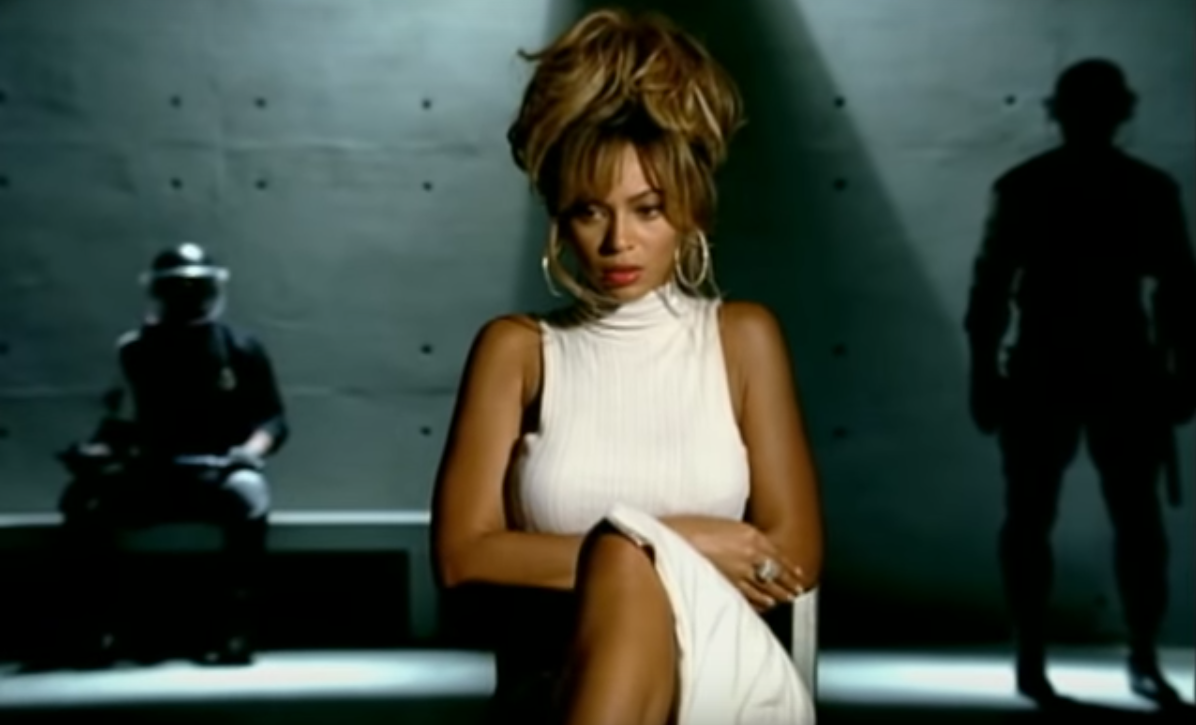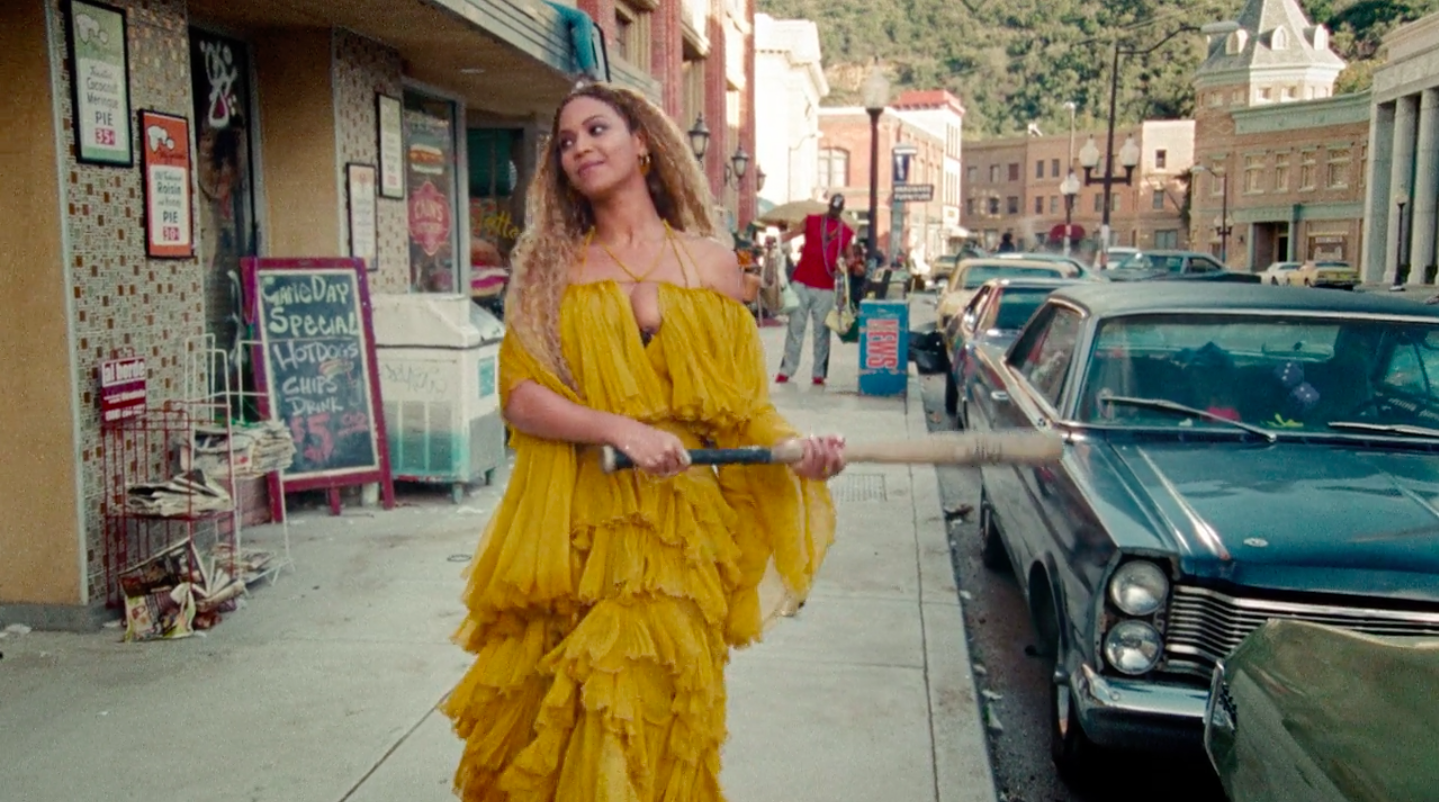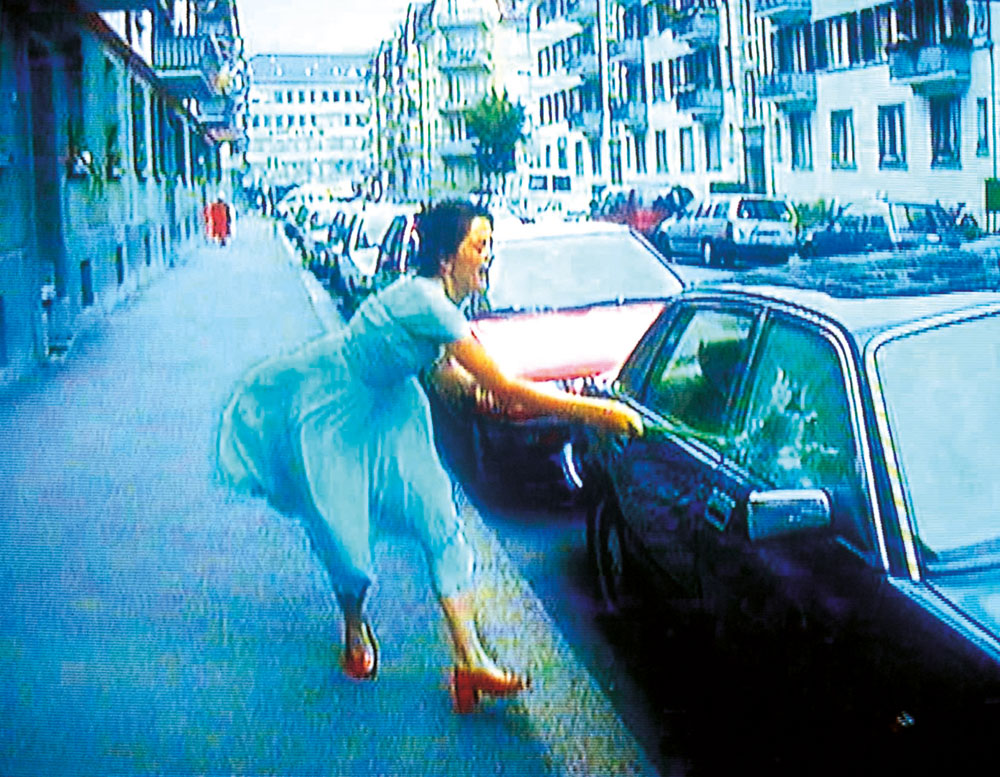Jealous or Crazy
by Zachary Woolfe

Beyoncé. Ring the Alarm. 2006. Directed by Sophie Muller.
This is an excerpt from Even no. 4, published in summer 2016.
Ten years ago, at another moment in the rocky union of the most famous couple in America, Beyoncé shrieked out a furious banger called “Ring the Alarm.” (A song, by the way, better by a good margin than anything on her celebrated new album Lemonade.) During the song’s strange, thorny bridge, she sings to Jay-Z, and to us too: “How could you look at me, and not see all the things?” It seems impossibly quaint, that time we could watch a Beyoncé video and not reflexively look for all the things — the whole long train of references, suggestions, and positions she now drags proudly behind her, the instigator of a thousand online thinkpieces. Back then all she did was vamp like Sharon Stone in Basic Instinct and add a wind machine.
Now, though, in a sequence of the video “Hold Up” — more properly, a segment of an hourlong film that both accompanies and supersedes Lemonade — Beyoncé walks nonchalantly down a street holding a baseball bat emblazoned with the words “Hot Sauce.” Occasionally, with little warning, she swings the bat into the passenger windows of parked cars, shattering them to bits. Those with some familiarity with contemporary art recognized the more-than-nod to Pipilotti Rist’s two-channel video installation Ever Is Over All. In that work, from 1997, a woman in a sundress and red high heels (not the artist, as is often assumed, but her friend Silvana Ceschi) struts in slow motion down a Zurich street, holding a large flower in both hands. Occasionally, with little warning, she swings the flower — it’s made of metal — and busts up a few boxy Citroëns. In Ever Is Over All, the second video channel features sensuous close-ups of flowers; for “Hold Up,” Beyoncé preferred fireballs.

Those hyperactive fans known as the Beyhive, not to mention endless young and eager music writers on the hunt for all the things, quickly asked whether the “Hold Up” scene was modeled on Ever Is Over All. Of course it is, down to the wittily complicit smiles that link the protagonist and the onlookers she passes. (One of Rist’s co-conspirators, of particular interest in 2016, is a female police officer.) It’s not so different from Beyoncé’s similarly incontrovertible borrowing of steps, costumes, and general mood from Anne Teresa De Keersmaeker, the Belgian choreographer whose athletic Achterland and antic Rosas danst Rosas got reprocessed into the 2011 video for “Countdown.” Beyoncé and her video directors seem to consume culture the way most of us do these days: scrolling through news feeds and YouTube channels; grazing on what looks cool; distilling it, as quickly as possible, into sound-bite ideological “messages.” Both De Keersmaeker and Rist seem to have signified Girl Power, a particularly seductive variety in which menace is leavened by whimsy.
This is a notably different tactic — and a shrewder one — than that of Kelly Rowland, Beyoncé’s former Destiny’s Child adjunct, who transformed a Dan Flavin neon into a stripper pole in “Work.” Or than Drake staging “Hotline Bling” inside an imitation James Turrell. (“I fuck with Turrell,” the Canadian tyro says. “He was a big influence on the visuals for my last tour.”) Or, indeed, than her own no-good husband, the self-proclaimed “new Jean-Michel,” flashing real Takashi Murakami paintings and counterfeit Damien Hirsts. Beyoncé, once so acquisitive that she sang a whole chorus hooked to Audemars Piguet watches, does not treat works of art as blue-chip objects. She treats works of art, somewhat obscure though just a Google search away, as value-neutral fodder. The blue-chip object is her.

Much of the search for Lemonade’s sources (in the film, especially) has had all the depth and interest of a spread in Where’s Waldo? What has mattered to the Beyhive and its media backers is not any referent’s meaning, or its context, or its importance; what counts is that the referent exists in a higher sphere than mere pop, and has now been IDed and GIFed. But her fans’ citational hunger is further proof of Beyoncé’s cultural mastery, and evidence that she gets much closer than Drake, Jay, and more price-conscious rapper aesthetes to the heart of our fractured, disconcerting artistic moment.
That moment is, of course, a visual one: the virtue of “Hold Up” is held to be its invocation of Rist, not the more obvious, accessible Yeah Yeah Yeahs sample in its chorus. It is with images more easily than with music — GIFs, after all, don’t have audio — that Beyoncé’s referents can be made frictionlessly about us, about what we imagine to be our interests, our desires, our politics. (Hence the current popularity on social media of celebrity photos with radically depersonalized captions: A sullen Rihanna, say, with the description “When you see bae in the club with his sideboo.”) The genius of Beyoncé — though a cold sort of genius — is to be both a participant in this repurposing of culture as simply, merely, a frame for the self, and also a vessel for her fans to do the same.
Artists and art world types are as fanatic about Queen Bey as anyone else. (Phaidon, publisher of a Rist monograph, cooed in a blog post: “The singer’s brilliant new video for “Hold Up” bears some striking similarities to Rist’s equally great 1997 work.” Equally great!) Their performative, retweeted delight at her quotation of a Swiss video artist expresses much more than validation from a pop diva’s wink their way. More, surely, this is how even artists and art institutions now look at culture: a thing that catches your eye as you scroll through a feed, perhaps mined for one-note politics, then swiped past. But consider that a woman we can surely call the most powerful force in American culture today takes in all the things no more profoundly than we do.